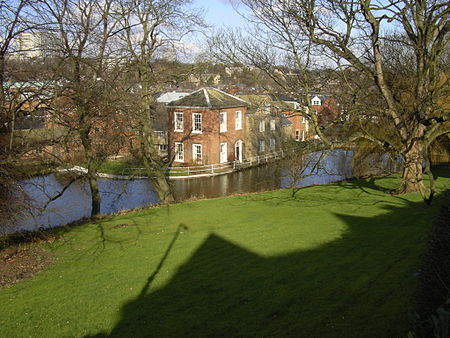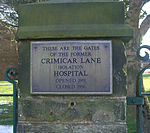Porter Brook

The Porter Brook is a river which flows through the City of Sheffield, England, descending over 1,000 feet (300 m) from its source on Burbage Moor to the west of the city to its mouth where it joins the River Sheaf in a culvert beneath Sheffield railway station. Like the other rivers in Sheffield, its steep gradient made it ideal for powering water mills and works associated with the metalworking and cutlery industries, and around 20 dams were constructed over the centuries to facilitate this. At its lower end, it is extensively culverted, but parts of it are gradually being restored to open channels, as part of a daylighting scheme for the city. The brook derives its name from its brownish colour, similar to the colour of Porter beer.
Excerpt from the Wikipedia article Porter Brook (License: CC BY-SA 3.0, Authors, Images).Porter Brook
Clough Lane, Sheffield
Geographical coordinates (GPS) Address Nearby Places Show on map
Geographical coordinates (GPS)
| Latitude | Longitude |
|---|---|
| N 53.3552 ° | E -1.5655 ° |
Address
Clough Lane
Clough Lane
S10 4QA Sheffield
England, United Kingdom
Open on Google Maps










